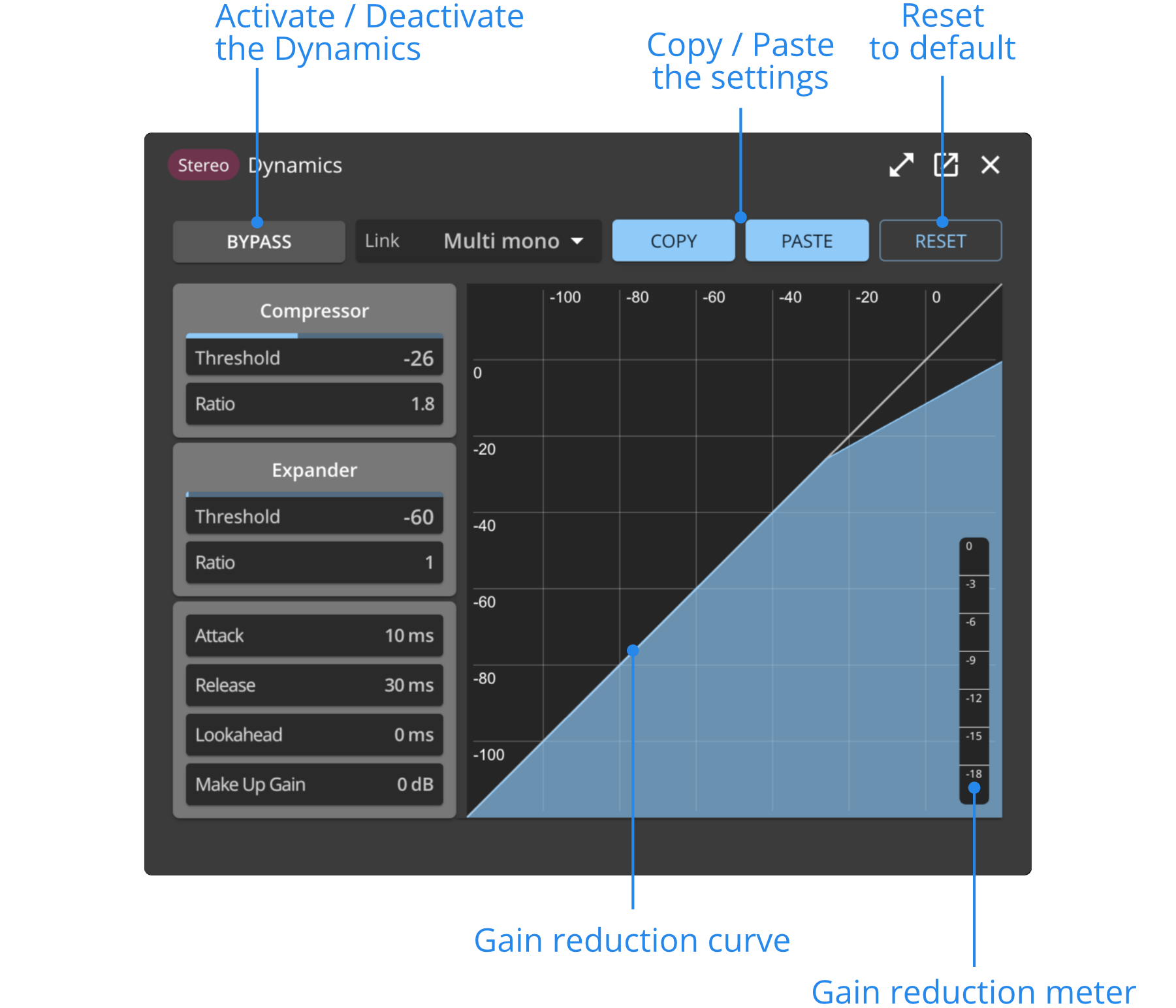Dynamics (Compressor, Expander)
HOLOPHONIX integrates a multichannel compressor and expander available for the following elements:
- all sources (virtual, ambisonics, direct-to-master)
- all spatialization buses (WFS, amplitude panning, ambisonics, binaural, stereo)
- reverb buses
- all master buses (master, monitoring, LFE buses)

Link
For objects with more than one audio channel (such as stereo sources, spatialization bus, etc.) you can choose how the gain reduction will be computed.
Multi-Mono
Each audio channel is treated independantly.
Link All
The same gain reduction is applied to all channel, and is led by all of them.
Link to 1st
The same gain reduction is applied to all channel, and is led by the first channel.
Compressor
Threshold
The threshold sets the level at which the gain reduction starts.
Compressor Ratio
The ratio sets the quantity of gain reduction to be applied when the signal is above the threshold. When set to 1, no gain reduction will be applied.
Expander
Threshold
The threshold sets the level under which the gain reduction is applied.
Ratio
The ratio sets the quantity of gain reduction to be applied when the signal is under the threshold. When set to 1, no gain reduction will be applied.
General Parameters
The Dynamics include:
- A global Bypass function that disables the dynamics,
- A compressor/expander visualization,
- Copy and Paste functions,
- A Reset option to reset the dynamics settings simultaneously.
Make-Up Gain
The Make-Up Gain adjusts the general Dynamics level between −40 dB and +40 dB. It can be used to balance any global level change caused by the filters.
Attack
The attack parameter sets the time take by the gain reduction to reach its target value. It ranges from 0.01 ms to 3000 ms (3 sec).
Release
The release is the time taken by the gain reduction to go back to no gain reduction. It ranges from 0.01 ms to 5000 ms (5 sec).
Lookahead
The lookahead time allows anticipating peaks by applying the gain reduction to the delayed signal.
HOLOPHONIX is designed mainly to work live, with minimal global latency always in our mind. Therefore, the lookahead delay is only applied to the selected channel (source, bus, speaker...). If you need to keep multiple channels in perfect synchronization, you can apply the same lookahead delay to them, or use the DELAY
Multiple Selection
If you have selected multiple Sources, or multiple Buses, the Inspector will display a "Multiple Dyn" preview window. Click on it to access the Multiple Dyn editing window.
In this window, you can perform the following actions:
- Bypass all Dynamics corresponding to the selected elements.
- Reset all Dynamics for the selected elements.
- Adjust all Dynamics for the selected elements.
The Multiple Dyn window is not available for Outputs and Reverb buses as they are not selectable elements in the Inspector.